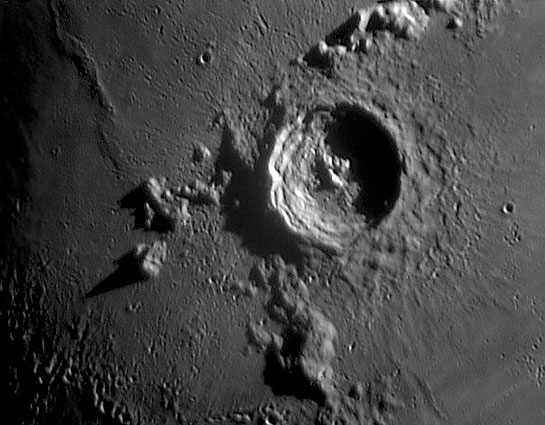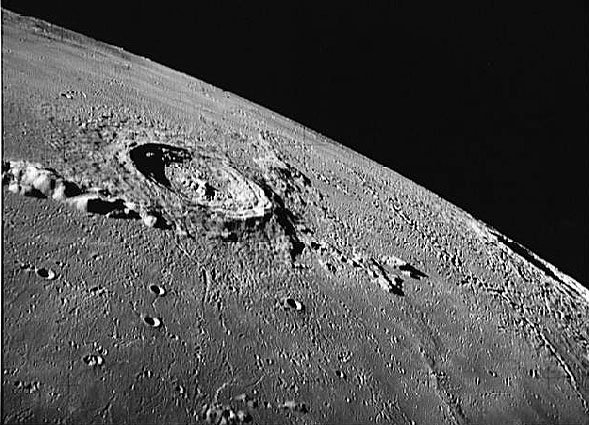Difference between revisions of "June 26, 2004"
| Line 53: | Line 53: | ||
</p> | </p> | ||
<p> </p> | <p> </p> | ||
| − | + | {{wiki/ArticleFooter}} | |
| − | |||
| − | |||
| − | |||
| − | |||
| − | |||
| − | |||
| − | |||
| − | |||
| − | |||
| − | |||
| − | |||
Revision as of 18:00, 1 February 2015
An Older Copernicus
Image Credit: Craig Zerbe |
|
An Older Copernicus Copernicus is the exemplar of a large complex crater. There are a few dozen other relatively fresh Copernicus-like craters on the lunar nearside - and a significant, but often overlooked one lurks just a few hundred kilometers to the east. Eratosthenes is a junior Copernicus - 58 km diameter vs 93 km - and is somewhat older. As Craig's excellent image details, Eratosthenes has wonderfully preserved terraces and massive central peaks, and an extensive array of secondary craters that have excavated radial crater chains into Mare Imbrium lavas. If you look at this area near full Moon you will see that Eratosthenes disappears, while Copernicus is very bright, and a Copernicus ray crosses Eratosthenes. Also, look carefully at full, and see if you can detect the short remaining ray from Eratosthenes that extends to the north. Copernicus is clearly younger than Eratsothenes, and that crater, obviously, is older than the nearby maria and the Apennine Mountain spur the crater excavated into. Mouseover for another excellent view, this one from Apollo 17 (AS17-145-22285), looking south, and just catching a profile of Copernicus on the top left. Technical Details: Related Links: Yesterday's LPOD: Cassini Observed Tomorrow's LPOD: An Older Tycho |
Author & Editor: |
COMMENTS?
Register, Log in, and join in the comments.





